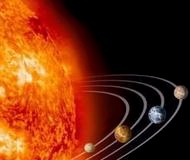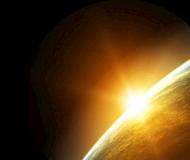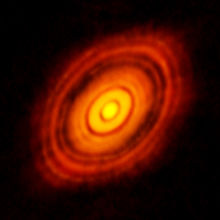
|
|||
| Contents | Prev | Next | |
![]()
3. Why is Mars Red?
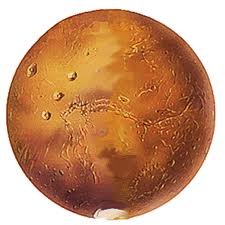 QUOTE:
"The short answer to 'why is Mars red' is that the planet is covered
in rust.
Iron oxide to be exact... The short answer does not explain where all of the
iron oxide comes from, though. There is a larger percentage of iron on the
Martian surface than there is on other planets. The exact source is unknown,
but many scientists believe that it came from the volcanoes that used to erupt
all over the planet."
QUOTE:
"The short answer to 'why is Mars red' is that the planet is covered
in rust.
Iron oxide to be exact... The short answer does not explain where all of the
iron oxide comes from, though. There is a larger percentage of iron on the
Martian surface than there is on other planets. The exact source is unknown,
but many scientists believe that it came from the volcanoes that used to erupt
all over the planet."universetoday.com
According to the answer above, volcanoes could have been the source of rust. But volcanoes did not produce the same result on other planets, not even close! Needless to say that there is no evidence to show that volcanoes existed all over Mars, let alone they were behind this rust. The total number of volcanoes on Mars that once were active is about 20 only. Now all of them are dead.
On the other hand, Venus had more volcanoes than Mars:
"Venus has more volcanoes than any other planet in the
solar system. Over 1600 major volcanoes or volcanic features are known (see
map), and there are many, many more smaller volcanoes. (No one has yet counted
them all, but the total number may be over
100,000 or even over
1,000,000)... None is known to be active at present, but our data is
very limited. Thus, while most of these volcanoes are probably long dead, a few
may still be active."
volcano.oregonstate.edu
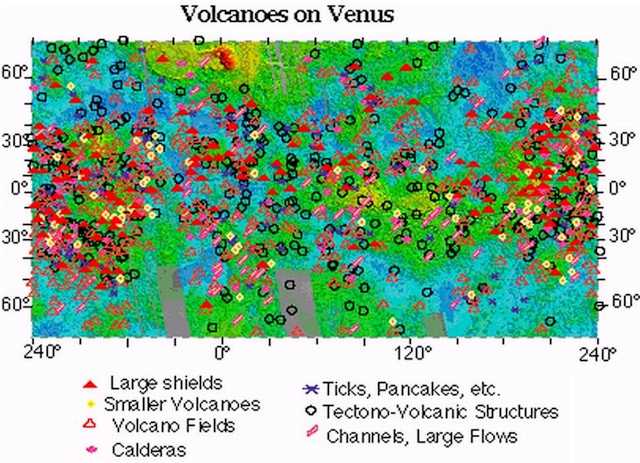
Even though Venus had much more volcanoes than Mars, the planet does not have any noticeable rust, or we better say it cannot be seen from long distances like Mars.
Venus, as well as all of the other inner planets, must have some amount of iron oxide on their surfaces, came from the dying second sun.
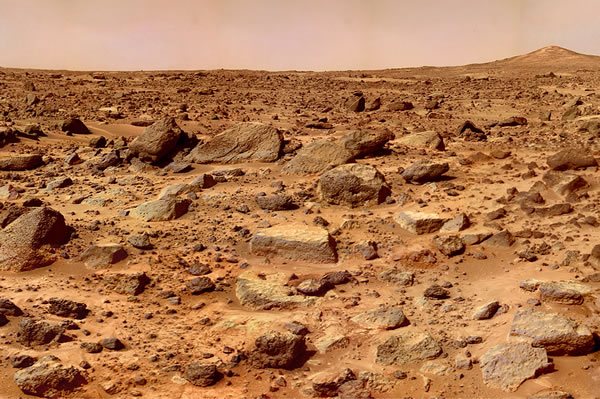
By looking at the surface of Mars, we see a layer of very fine rust covering the whole planet. It is like someone held a blower and blew fine rust, in equal quantities, on the surface of Mars. And that is exactly what happened, but the blower was very, very big!
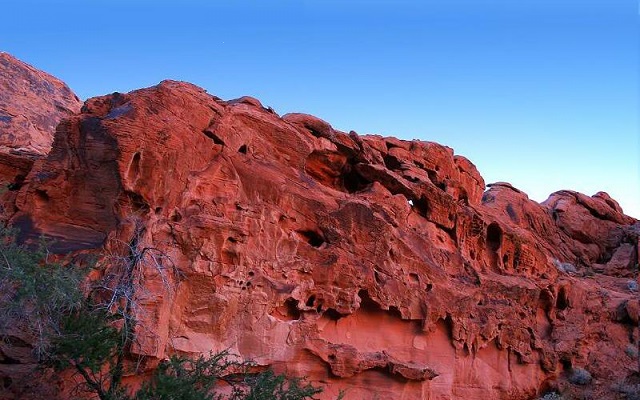
These "rusty" sandstone mountains are called Triassic sandstone because they date back to the Triassic period; at the end of the Permian-Triassic extinction event, 200 million years ago.
This rust could have been occupying a portion of the the debris disk, or the
disk itself kept changing color from time to time depending on the released
material from the dying second sun. And then it has fallen on Earth and mixed
with the Earth's soil.
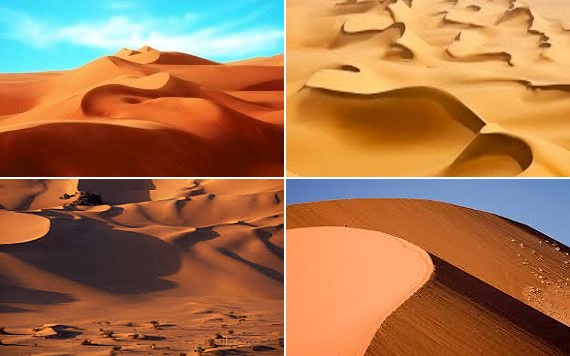
Desert sands on Earth
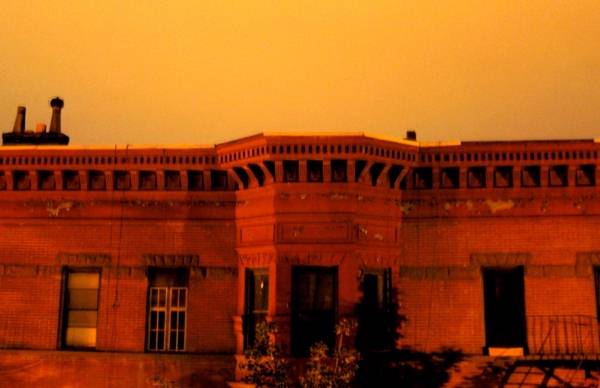
scientificamerican.com
If we take now the radiometric dating of the Triassic sandstone as a
reference, we can tell that these desert sands have got the iron oxide at the
same time as the mountains, because the sandstone was originally sand: "Triassic
sandstone was formed in a sandy desert environment. It is made up of
quartz crystals held together in an iron oxide rich cement; this cement gives
the rock its characteristic red colour."
/people.bath.ac.uk
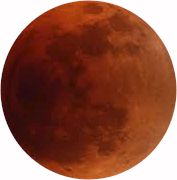
The Earth's moon also has iron oxide in some areas: "The mare [lowland]
regions have low reflectance because they contain relatively high amounts of
iron oxide (FeO). Some mare basalts contain unusually high amounts of
titanium oxide (TiO2) in addition to iron oxide, making for even lower
reflectance. TiO2 also shifts the color of the mare
from red to blue."
nasa.gov
As you can see in the quote above, the lowlands on the moon should be red, but the addition of titanium oxide turned them to blue. Titanium oxide (TiO2) is also a product of dying stars. Because the moon is a very dry object, no wind is there, these chemical elements remained where they have been "deposited" initially. It is very likely the highlands also got some amounts of iron oxide, but much less. The moon's lowlands are on the facing side only; the dark side has almost no lowlands.
The question now is: if iron oxide is (iron + oxygen), and there is no oxygen on the moon, what caused the iron to rust?
According to the quote above, some of the moon's lowlands contain unusually higher amounts of titanium oxide than other lowlands. Unlike Earth, the moon does not have any atmospheric or environmental changes, so what makes one basalt area different from another basalt area? This is an indication that these chemical elements have been deposited on the moon at a later time.
The crater counting technique gives the lowlands of the moon an age of 200
million years only: "Lunar maria (lowlands) have only 1/20 the crater density
of the lunar highlands, therefore, they should be 1/20 the age, right? So, by
this reasoning, if the highlands were 4.5 billion years old, as old as the
Earth, then the maria would be just 200 million years old."
coursehero.com
astro.umd.edu
This age estimate of 200 million years is very reasonable, because it matches the age of the sea floor and rocky mountains on earth, plus the rusty Triassic sandstone mountains. So if the moon's lowlands have an age of 200 million years, then the iron oxide and titanium oxide must have been deposited on these areas after they were created.
It doesn't seem there is any data about iron oxide on the "surface" of Venus published on the web in the time being, or it hasn't been known yet.
According to the link below, Mercury has about 3% of iron oxide on its surface: "Direct observations from Earth indicate that it is 3 percent iron oxide by mass, compared to Earth's 8 percent." (holoscience.com)
The same logical question arises again: if Mercury does not have any oxygen at all, what caused the iron to rust on Mercury?
QUOTE: "Mars has twice as much iron oxide in its outer layer as Earth does." (wikipedia.org)
So if the percentage of iron oxide on Earth is 8 percent, Mars, according to the Wikipedia link above, should be 16 percent.
If we try now to arrange the inner planets based on the percentage of iron oxide they got on their "surfaces," we should have them in the following order: Mars, Earth, Venus, Mercury.

Percentage of rust on the surfaces of the inner planets
The closer the inner planet is to the asteroid belt, the higher percentage of iron oxide it has on its surface. Anything below the surface is just a supposition.
![]()
| The full report in a single page | ||
| Contents | Prev | Next |
